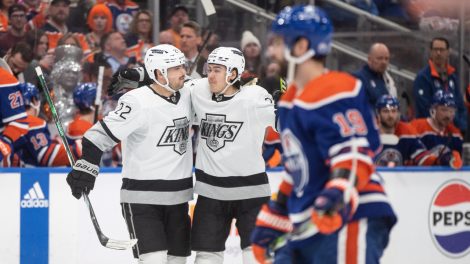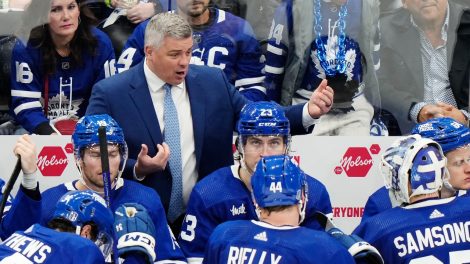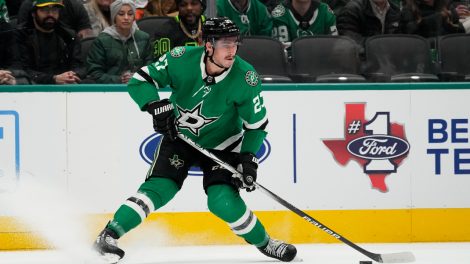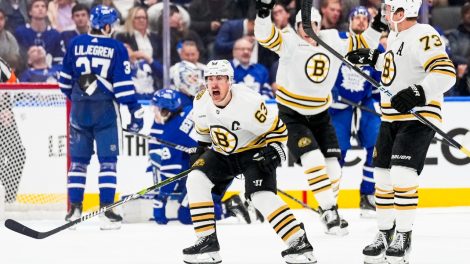As the Vancouver Canucks cruise toward the end of the season and the NHL draft lottery, fingers will be pointed and blame assigned. In a critical market that hasn’t lived through much regular season ineptitude over the past decade, the blame game is unavoidable.
In a miserable season that was sabotaged by injuries, the Canucks performed below expectations, even if those expectations were modest. The club wasn’t billed as a contender and didn’t behave as such but management, coaches and players were consistent all season about the playoffs being their goal. It’s a goal from which the team has fallen well short.
In an insightful and reflective interview on Vancouver sports talk radio on Thursday, Canucks general manager Jim Benning blamed himself for the club lacking the depth it required to overcome a variety of injuries to key veterans like Dan Hamhuis, Alexander Edler and Brandon Sutter.
“We didn’t have the depth and that’s on me,” Benning said. “We had to get some young players up and going and when we had injuries to our good players we had to play young players in elevated roles and that’s not a recipe for success in this league.”
It’s a fair comment. When Sutter was injured in November, and again in February, it had a domino effect throughout the forward ranks. Bo Horvat was elevated to an extraordinarily demanding shutdown role, one that he wasn’t quite ready for. On defence, meanwhile, injuries to Hamhuis and Edler resulted in 22-year-old Ben Hutton playing in a matchup role. Hutton acquitted himself well at the top of the roster, but didn’t excel the way he had earlier in the season in more deliberate usage.
With a final assessment though, it should be noted that Vancouver’s issues go well beyond depth. Also, the club’s most costly injury this season didn’t afflict Sutter, Hamhuis or Edler.
Though he hasn’t addressed it at any length and has only missed a small handful of games, Canucks captain Henrik Sedin has been playing hurt for much of the year. It’s evident to any keen observer just by his posture when taking faceoffs and how upright he is in his skating stride.
In early December, Henrik’s underlying numbers began to fall precipitously – to levels rarely seen in his career. His average ice time fell too. By Christmas, Henrik was shut down for a pair of games. He returned on Boxing Day, but didn’t sit on the bench in an overtime win over the Edmonton Oilers for fear that his mysterious injury would stiffen up.
Sedin continued to gut it out but was hit from behind by Mikhail Grabovski in mid-January and missed another handful of games before the NHL All-Star break.
Henrik has always been loath to miss a shift, much less a game, because of injury. While the veteran centre deserves credit for the way he’s shown up and competed every night, he hasn’t performed up to his usual superstar standard.
Henrik and brother Daniel are two of the most dominant puck possession players of the Behind-the-Net era. Their cycle game is the stuff of legend. Since December 1st, however, the Canucks have controlled just 47.2 per cent of shot attempts with Henrik on the ice at even strength. For Henrik, that’s an extremely low number, something that’s been almost unheard of for a 47-game stretch during his Hall of Fame-worthy career.
It’s difficult to separate how much of this is because of the injury Henrik has been playing through, how much is the effect of age — the twins turned 35 years old in September — and how much is the impact of the team itself struggling. It’s likely a combination of factors.
The splits are pronounced though. The Canucks went from controlling 63 per cent of shot attempts when Henrik was on the ice at even strength in their first 25 games, to 47.2 per cent thereafter. The Canucks captain managed 23 points in his first 25 games, but has scored just 31 in 47 games since. His faceoff percentage – always the first statistical indicator one should look at when evaluating the health of a centreman – dropped from 50.7 per cent in his first 25, to 42.8 per cent in his 47 games since.
The drop off in quality at the top of the roster has been massive and represents the biggest change for the club from last season to this one.
It also represents the club’s biggest challenge, in the big picture. Elite players win championships, and though the Canucks have some nice, young pieces already in the organization, they don’t have the next generation of Sedin twins ready in the waiting.
Which is why the club’s dramatic struggles over the past few months may prove to be a blessing. There is elite talent available at the top of the 2016 draft class. It’s there for the taking with a favourable bounce of the lottery balls.
“The top three kids are guys that could be first-line players on teams going forward,” Benning said on Thursday of the talent at the top of the 2016 draft. “They’ll be able to play in the league next year and possibly be 20 goal scorers. So they’re high-end players.”
More depth is nice, of course, but high-end players are what the Canucks truly need.









